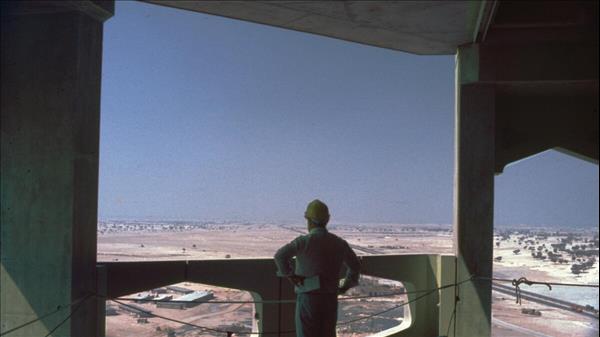(MENAFN- Khaleej Times) Published: Mon 6 Mar 2023, 10:23 AM It was in 1959 that John Harris was first invited to Dubai by then-ruler Sheikh Rashid bin Saeed Al Maktoum to design the city's first town plan. The British architect then went on to become one of the main forces behind designing the city's modern skyline, including the Trade Centre, Dubai Municipality and Maktoum Hospital.
“When I first met John Harris in 2006, I was surprised that no one really knew much about him,” said architect and author Todd Reisz.“I felt like his was a story that needed to be told.”
Reisz then went on to write the book Showpiece City: How Architecture Made Dubai. Released in 2020, the book chronicles the life and times of John Harris and outlines his contributions to the architecture of this city.
Fascination with Dubai Reisz's fascination with Dubai began in 2005 when he visited the city for the first time.“I was always curious about the city,” he said.“So, while working in Netherlands, when I got an offer to work on projects in Dubai, I decided to take it.”
When he arrived here, he was surprised by the lack of written urban history detailing the city's transformation.“How did the city of Dubai grow and transform? Tracing that journey was missing in English,” he said. That is how he started his own research and came across a relatively unknown British architect – John Harris.
Realising that he could trace the transformation of the city through the lens of architecture, Reisz decided to compile everything he could regarding Harris' work.“It was meant to be a hobby project,” he said.“Something that would take a year or two maximum.”
Instead the project took 12 long years to complete, during which he flew several times to the UK to meet Harris and his family. In 2008, just as Reisz quit his job to write the book, Harris passed away.“I was in London to meet him when his son informed me that he had died,” said Reisz.“After that I stayed in close contact with his wife Jill Harris, who was also an architect, and his son, Mark Harris.”
According to Reisz, there were three main sources of information for the book.“The primary source was the documents from the library of John Harris, including drawings, notes and correspondence,” he said.“Another was the national archives in the UK. The third was media, like Khaleej Times and Al Ittihad.”
Finally, the labour of his love was released in the fall of 2020.“I arranged the chapters in a certain way to connect the architecture and the expansion of the city to meet global expectations,” he said.“For example, the chapter that talks about the building of the National Bank of Dubai [details] how trade flourished in the city. In the chapter about Maktoum hospital, I have talked about how health and hygiene standards in the city improved as Dubai started promoting itself as a healthy city.”
Night School This year, several Dubai residents gathered together to discuss the book and the history of Dubai during a series of classes organised by Jameel Arts Centre. Led by Reisz, participants of the Night School explored how history was written and constructed in Dubai and the region.
“The Night School changed [my] outlook on the city,” said Lucas Morin, Exhibitions Curator at Art Jameel.“Participants paid attention to histories contained within the urban fabric. One of them wrote in the survey that [being] surrounded by accomplished scholars, archivists and writers empowered and inspired them to push through, and rekindled their spirit.'
According to Morin, some of the areas discussed during the sessions were Deira and Jumeirah.“Some landmarks like Lamcy Plaza, for instance, also came up a lot,” he said. Held over four weeks, the participants of Night School met for seven sessions during which they drew parallels of Dubai with several other cities in the world.
ALSO READ:
watch: rak ruler plants 'samar' tree seedlings, digs through soil with primary school children
from small apartment in bur dubai to large campus in oud metha: school started by 4 women turns 50



















Comments
No comment